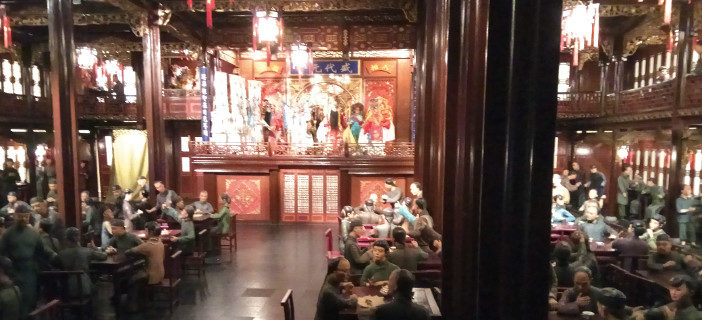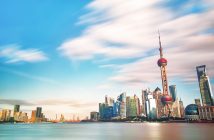The rivalry between Beijing and Shanghai runs pretty deep; it’s like Tom and Jerry, Ali vs. Frazier, Edward Drinker Cope and Othniel Charles Marsh. Beijing is the political and cultural capital of China, while Shanghai leads on finance and fashion. Beijing has smog, Shanghai is smug. And so on.
There’s no doubt which side we here at beijingkids fall on – the clue is in the name. However to live in China and not experience one of its great cities would be taking civic loyalty a step too far. So Andrew Killeen and his family set off for the town once known as “Little Suzhou,” to see what it has to offer.
The Oriental Pearl Tower dominates the Shanghai skyline like, erm… various comparisons come to mind, but few of them suitable for a family publication. Whatever you think of it though, it’s certainly iconic, and was China’s tallest tower for 13 years, until the recent frenzy of skyscraper building left it behind.
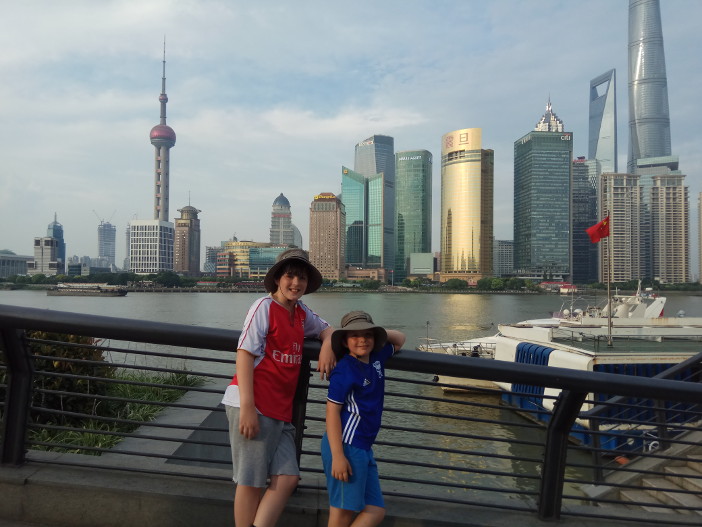
The Shanghai Skyline as seen across the river from the Bund. Oriental Pearl far left.
We first visited it on a hot afternoon, and walked unhindered through the empty mazes of railings and past signs warning of long waiting times. However, on arriving at the ticket office, we made the fateful decision to come back later, in the hope of seeing sunset from the top.
By the time we returned in the evening the crowds had gathered, and though we didn’t have to queue outside, the scene inside resembled the Beijing subway at rush hour. It was chaotic and dispiriting, and we declined to join in.
Instead we headed to the basement, and the Shanghai History Museum. Locating the attraction itself was a little tricky, as the lower level of the Tower is largely dedicated to (of course) a shopping mall. However at the center lies a huge circular area where the elevators arrive from above. Here you can see the line filing round slowly as people wait to visit the upper levels, and once you’ve finished congratulating yourself on avoiding the tedium, you can find the entrance to the museum. (Tickets need to be purchased on the first floor before descending, and cost a very reasonable RMB 35 for adults.)
On entering you’ll encounter replicas of historic cars and trolley-buses. However a sign directs you to go straight upstairs, and like the compliant rule-followers we are, we obeyed, foolishly assuming our path would lead back to these exhibits before the end. It didn’t, so make sure you explore this area thoroughly before moving on.
There are some displays recounting the early history of Shanghai, which tend, I suspect, rather to overstate the city’s pre-colonial importance as a river port (the “Little Suzhou” tag reinforces that impression). Then come the imperialist gunboats, here in the form of detailed models, and we enter the most interesting part of both the story and the museum.
While we can only deplore the aggression of the western powers, the simple fact is that Shanghai flourished as a “treaty port”, and most of the museum consists of life-size recreations of these boom years, complete with waxwork models. I’ve read reviews of this attraction describing these models as “creepy” or “tacky”, but I found them fascinating and impressive.
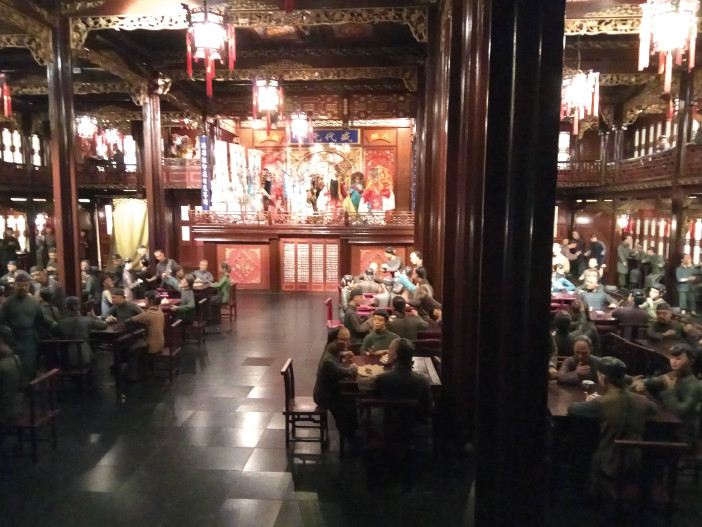
Model of a teahouse, with opera taking place onstage
All human life is here: teahouses and opium dens, restaurants, banks, and artists’ studios, even a lady of the night lurking in a stairwell. The museum loses no opportunity to remind us of the colonialists’ oppression, as for example in this display of a court jointly run by the locals and the invaders:

And though most of the exhibits focus on the opulence and prosperity, there’s also a reminder of the thousands who lived in shanty towns, in extreme poverty.
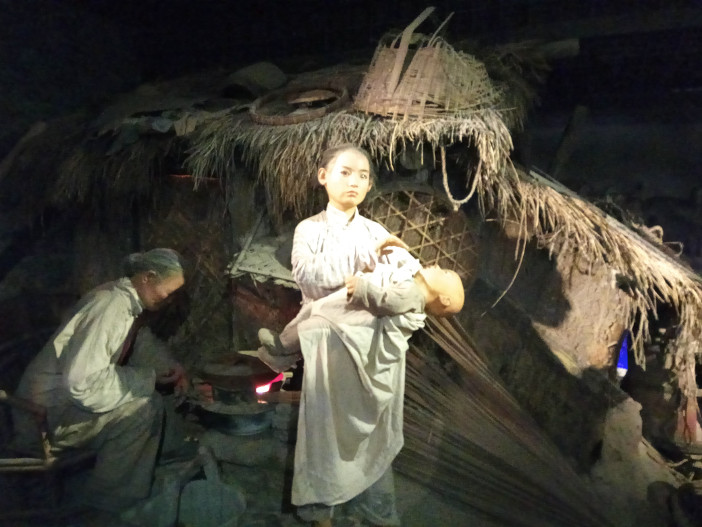
However it’s hard to escape the conclusion that Shanghai must have been a very exciting place to be during that period. Most of the models are very well executed, with only a few where the standards slip.

People in old Shanghai drove round in tiny cars which they refueled at giant pumps. Apparently.
If you visit the museum, make sure you allow a couple of hours, as it’s deceptively large. But it’s a great way to acquire not only a knowledge of Shanghai’s history, but a sense of its glamorous, seedy past.
Photos: Andrew Killeen

